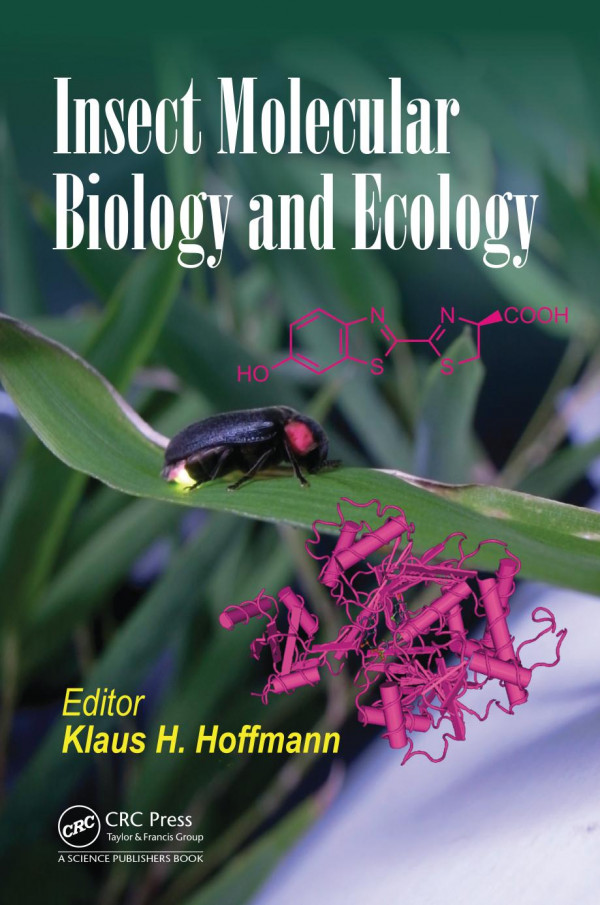

Most ebook files are in PDF format, so you can easily read them using various software such as Foxit Reader or directly on the Google Chrome browser.
Some ebook files are released by publishers in other formats such as .awz, .mobi, .epub, .fb2, etc. You may need to install specific software to read these formats on mobile/PC, such as Calibre.
Please read the tutorial at this link. https://ebooknice.com/page/post?id=faq
We offer FREE conversion to the popular formats you request; however, this may take some time. Therefore, right after payment, please email us, and we will try to provide the service as quickly as possible.
For some exceptional file formats or broken links (if any), please refrain from opening any disputes. Instead, email us first, and we will try to assist within a maximum of 6 hours.
EbookNice Team

Status:
Available0.0
0 reviews
ISBN 10: 1482231883
ISBN 13: 978-1482231885
Author: Klaus H Hoffmann
Insects represent the most abundant and diverse animal group on Earth. The number of described species is more than one million and up to ten million are estimated. Insects have one of the widest distributions in the world because they have adapted to extreme ranges of environments.
Molecular ecology studies ecological processes based on the analysis of biomacromolecules, particularly DNA, RNA, and proteins, but also of low-molecular weight signal compounds. Molecular ecology uses the exciting opportunities offered by the tools of molecular biology.
The book presents current entomological research, where molecular tools help to advance traditional ecological studies. Chapters include ones on insect–insect and insect–plant interactions, on mechanisms of environmental adaptation, or on the use of insect biotechnology in pest and vector control. The book helps to combine powerful methods in molecular biology with exciting issues in ecology to understand why insects became "masters of survival."
Polyphenism refers to the phenomenon where a single genotype can lead to multiple distinct phenotypes depending on environmental cues (e.g., caste differentiation in ants, seasonal forms in butterflies).
Mechanisms include hormonal regulation (like juvenile hormone and ecdysteroids), epigenetic factors, and gene expression pathways.
Explores how insects produce or sequester chemical compounds for defense (e.g., cantharidin, alkaloids).
Applications in drug discovery, pest control, and biochemistry.
Bioluminescence systems (like luciferin-luciferase in fireflies) are being re-examined with modern molecular tools.
Use in biotechnology, biosensors, and gene expression studies.
MicroRNAs regulate gene expression and are crucial in development, metamorphosis, immunity, and stress response.
Research uses high-throughput sequencing to identify miRNA functions across insect species.
Genomic and peptidomic (peptide profiling) tools reveal new aspects of hormonal regulation, neuropeptides, and reproductive biology.
Helps understand key insect processes and identify targets for pest control.
Neuropeptides are essential for behavior, feeding, reproduction, etc.
RNAi is used to knock down genes in these pathways, helping dissect their function and potentially control pests.
Studies how insects respond to changes in day length to regulate development, reproduction, or diapause.
Underlies seasonal adaptation and is often mediated by circadian and hormonal systems.
Focuses on physiological adaptations like cryoprotectants (e.g., glycerol, antifreeze proteins) and metabolic rate depression.
Relevant for understanding overwintering survival and climate change resilience.
Examines how ecological factors (e.g., parasites, pathogens, environment) shape the immune system.
Integrates evolutionary biology with molecular immunology.
Coleoptera (beetles) have specialized guts; understanding their microbiota, digestive enzymes, and barriers can help develop biocontrol strategies or targeted pesticides.
TMOF inhibits digestive trypsin in mosquitoes, affecting nutrient uptake and reproduction.
A biotechnological target for population control of vectors like Aedes aegypti.
Uses RNA interference to study genes involved in chemical defenses (e.g., secretion of toxins by beetles).
Helps understand metabolic pathways and offers insights for pest management.
Insects like silkworms, weaver ants, and caddisflies produce silk with diverse properties.
Research is translating this natural diversity into biomaterials, textiles, and medical devices.
insect molecular genetics
insect ecology behavior populations and communities
an insect called the hemlock woolly adelgid was introduced
insect molecular biology and ecology